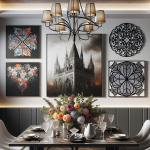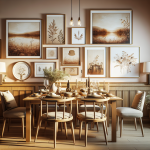Cartoons have been a beloved form of entertainment for decades, capturing the hearts of audiences young and old. One of the key elements that make a cartoon memorable is its character design, particularly the face. A well-designed cartoon face can convey personality, emotions, and humor, instantly connecting with viewers. In this article, we will explore the art of creating a unique cartoon face design that will make your character stand out. Whether you are a seasoned artist or a beginner, these tips and techniques will help you bring your cartoon characters to life.
Understanding the Basics
Before diving into the details of creating a unique cartoon face design, it is essential to have a good understanding of the basics. A cartoon face typically consists of several key elements, including the eyes, nose, mouth, and ears. These features can be exaggerated or simplified to emphasize certain characteristics of the character. For example, large, expressive eyes can make a character appear cute and friendly, while a small, downturned mouth can convey sadness or disappointment.
When developing a cartoon face design, it is crucial to consider the overall shape of the head and how the features will fit together. Experiment with different proportions and angles to create a visually interesting and appealing design. Remember, cartoons are not bound by reality, so feel free to stretch and exaggerate the features to add personality and charm to your character.
Playing with Shapes and Proportions
One of the most effective ways to create a unique cartoon face design is to play with shapes and proportions. Experiment with different head shapes, such as round, oval, square, or heart-shaped, to see how they affect the overall look of the character. Consider the size and placement of the features in relation to the head shape, as well as the spacing between them.
Try varying the proportions of the eyes, nose, and mouth to create different effects. For example, placing the eyes closer together can make a character look cross or angry, while widening the distance between them can give a character a more innocent or playful appearance. Similarly, adjusting the size and shape of the mouth can convey a wide range of emotions, from joy and excitement to sadness and surprise.
Adding Unique Features
To make your cartoon face design truly stand out, consider adding unique features that reflect the character’s personality or background. This could include distinctive hairstyles, accessories, or facial markings that help to distinguish your character from others. Think about what makes your character special and how you can incorporate those elements into the design.
Experiment with different hairstyles, such as curly, straight, or spikey, to find one that complements the character’s overall look. Consider adding accessories like glasses, hats, or jewelry to enhance the character’s style and personality. You can also play with facial markings, scars, or tattoos to give your character a bit of edge or mystery.
Expressing Emotions
One of the strengths of cartoon characters is their ability to express a wide range of emotions through their facial expressions. To make your cartoon face design more dynamic and engaging, experiment with different expressions and gestures to convey emotions such as happiness, anger, sadness, surprise, or fear.
Focus on the eyes, as they are often the most expressive part of a cartoon face. Experiment with different eye shapes, sizes, and positions to create a variety of expressions, from wide-eyed wonder to narrowed-eyed suspicion. Consider the eyebrows as well, as they can dramatically change the character’s expression with just a slight adjustment.
Don’t forget about the mouth and nose, which can also play a significant role in conveying emotions. Experiment with different mouth shapes, such as smiles, frowns, or grins, to see how they affect the overall expression of the character. Similarly, adjust the position and shape of the nose to add nuance and depth to the character’s emotions.
Color and Style
When developing a cartoon face design, color and style can play a critical role in defining the character’s look and personality. Experiment with different color palettes to find one that complements the character’s features and expresses their unique traits. Consider the use of bold, bright colors for a playful or energetic character, or muted, subdued colors for a more serious or mysterious character.
Think about the overall style of the character as well, from the line work and shading to the textures and patterns. Play with different drawing techniques, such as cross-hatching, stippling, or watercolor, to add depth and dimension to the character’s face. Consider the use of patterns or textures for clothing, hair, or accessories to enhance the character’s visual appeal.
Bringing it All Together
Creating a unique cartoon face design is a fun and rewarding process that allows you to unleash your creativity and imagination. By experimenting with shapes, proportions, features, expressions, colors, and styles, you can develop a character that is truly one-of-a-kind and memorable. Remember to have fun and not be afraid to take risks or make mistakes, as these can lead to unexpected and exciting results.
Bring your cartoon face design to life by giving your character a name, backstory, and personality. Consider how your character interacts with other characters in your story or comic strip, and how their unique features and expressions contribute to the overall narrative. Remember, the more you invest in developing your character, the more audiences will connect with them and become invested in their journey.
FAQs
Q: How can I make my cartoon face design more expressive?
A: To make your cartoon face design more expressive, focus on the eyes, eyebrows, mouth, and nose. Experiment with different shapes, sizes, and positions to convey a wide range of emotions, from joy and excitement to sadness and anger.
Q: What tools and materials do I need to create a cartoon face design?
A: You can create a cartoon face design using traditional drawing tools like pencils, markers, and paper, or digital tools like graphic design software and tablets. Experiment with different mediums to find one that suits your style and preferences.
Q: How can I develop a consistent style for my cartoon characters?
A: Developing a consistent style for your cartoon characters takes practice and experimentation. Start by drawing the same character in different poses and expressions to see how their features remain consistent. Consider creating a style guide with details on proportions, colors, and expressions to help maintain continuity in your designs.
Creating a unique cartoon face design is an exciting and rewarding process that allows you to unleash your creativity and bring your characters to life. By playing with shapes, proportions, features, expressions, colors, and styles, you can develop characters that are memorable, engaging, and full of personality. Whether you are an experienced artist or a beginner, these tips and techniques will help you create cartoon characters that stand out from the crowd and captivate audiences of all ages.








+ There are no comments
Add yours